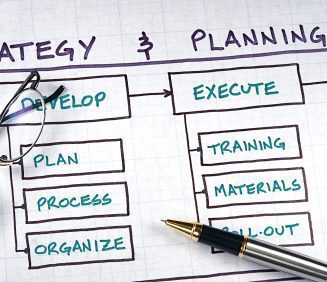Project Management Software is a Tool, Not The Answer
No matter what the job is at hand, great tools in the hands of a trained project management professional will lead to exceptional results. But what about providing great tools to an untrained person? Would you expect comparable results? The answer is a resounding NO!If this is true, then why do some people believe that having good project management software tools will make them good project managers and ultimately lead to successful projects? The missing variable in this equation is a sound project management methodology to guide them through the planning and control process. Engraining a sound project management methodology in your organization, supported by a suite of great tools, is the first step towards getting great project results.
Select a Sound Project Management Methodology
All projects have three major elements that need to be controlled in order for a project to be successful. Those elements are Time, Cost, and Quality. Time is measured by using a schedule, cost is measured by using a budget, and quality is measured by using specifications. Projects are only successful if they are completed on-time, within budget, and to specifications. If the project management system you have selected does not take into consideration all three of these elements then you will have a difficult time planning and controlling your project through its completion. Your project deadline, budget, and quality constraints will require you to make trade-offs in these three variables. A sound project management approach creates an opportunity to make better decisions about those trade-offs earlier in the process and thereby increases the probability of success.
Select Tools that Support the Chosen Methodology
 There are many project management software packages currently available in the market today. Finding a software tool that quickly provides the information needed to analyze and make decisions for your project is not a simple task. While many project management software tools are good for planning the initial schedule, sometimes it can be difficult to update the schedule, change resource allocations, modify activity durations or change precedence relationships. Select a tool that has a friendly user interface, easily allows plan changes and supports your chosen project management methodology.
There are many project management software packages currently available in the market today. Finding a software tool that quickly provides the information needed to analyze and make decisions for your project is not a simple task. While many project management software tools are good for planning the initial schedule, sometimes it can be difficult to update the schedule, change resource allocations, modify activity durations or change precedence relationships. Select a tool that has a friendly user interface, easily allows plan changes and supports your chosen project management methodology.
The Planning Process
A good planning process is made up of three distinct steps:
- Define the Project
- Develop an Initial Project Plan
- Compress the Schedule and Develop a Baseline Plan
Defining the project is the first step towards having a successful project outcome. During this step the project manager is selected and the sponsor(s) of the project is interviewed to determine exactly what he/she is expecting the project team to deliver. Once the project has been defined by the sponsor(s), the project team is assembled to develop the project charter. The charter should contain a short background statement, the expected deliverables, the project objectives, the list of the project team and sponsors, a list of key dates, and any assumptions, risks, and constraints that the project team can identify. In addition, the project charter should also contain the time-cost trade-off rate. This is defined as the cost to the organization if the project is finished late or the benefit if finished early. The time-cost trade-off rate is used to make cost effective decisions for compression of the project plan. Once the team is in agreement about the project’s scope, key personnel requirements, major constraints, assumptions, and risks, those items should then be presented to stakeholders for approval. By completing this process up-front, the project team will have a clearly defined (and understood) set of deliverables and an agreed-upon direction prior to making the investment in developing the project plan.The initial project plan is developed by the project team around the deliverables identified in the charter. The deliverables are broken down into work tasks (activities) through the development of a work breakdown structure. Once this is complete, the team needs to identify the task owners, durations and the precedence relationships. The precedence relationships are developed and documented using a network diagram. After the network diagram is developed, the project plan is entered in to the selected project management software for validation and schedule compression. Upon completion of the project plan compression and validation, a baseline of the plan is saved. The baseline plan is used to measure variance as the project is moved into the control mode.
The Control Process
The Control Process is the most important part of managing a project once a good plan has been developed. All projects should be updated on a regular basis, typically, every one to two weeks. The main objectives of project control are to:
- Gain an objective indication of the status of the project and key milestone dates
- Keep team members focused on the project and their activities
- Uncover and resolve any schedule-related problems
- Update the schedule to reflect the most current information about the project
The first step in the control process is to collect activity status information from the team members. The project plan should then be updated and the remaining activities should be rescheduled. The plan is then compared against the baseline plan and the variance is analyzed. If necessary, based on the update, the plan may need to be recompressed to meet the project deadline/key dates. The recompression is typically done with the project team. After the schedule has been recompressed, all team members need to reconfirm that they can meet the near term commitments for their assigned tasks. A project status report is then developed and distributed to the management and project team members. In some cases, a formal control meeting is held to communicate the update results directly to management and the project team members.
Conclusion
There are many good project management software packages available on the market today, but without a team that is well trained in sound project management principles that utilize a proven planning and control process, successful projects will be difficult if not impossible to achieve. Software is not the answer, a sound project management methodology is!

Provided by PMAlliance a project management consulting, project management training and project office development services company.












